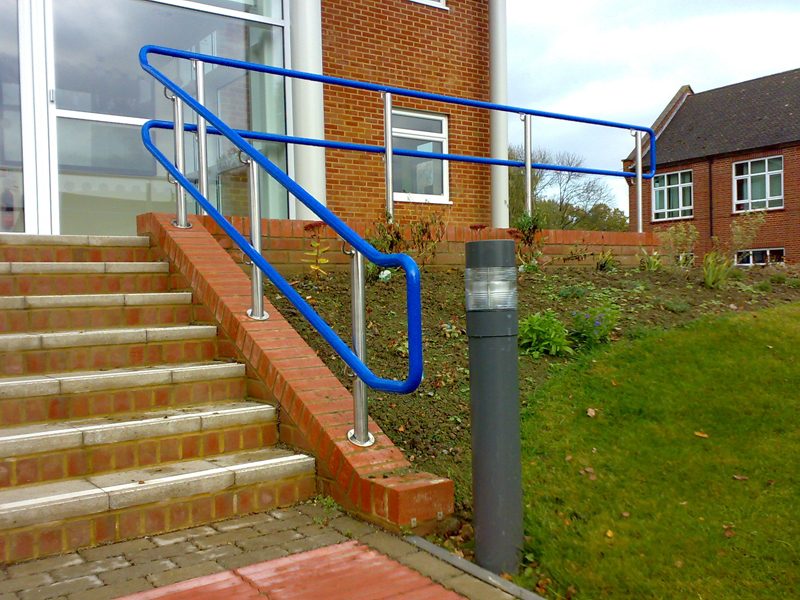Handrails are installed to provide a safe means of access to users. For some individuals, such as the disabled and elderly, these can be difficult to negotiate in terms of both height and levels.
The Disability Discrimination Act (1995), now replaced by the Equality Act (2010) was put in place to address the need for installing accessible handrails to public buildings in order to ensure that disabilities are not unfairly discriminated against.
A DDA handrail has several regulations and requirements in order to meet the needs of the Disability Discrimination Act. These are as follows:
Height – the height of a DDA compliant handrail should be between 900mm and 1.1m in height and should extend the width of one stair tread and then level out for at least 300mm.
Steps – if steps are wide, handrails are the ideal solution for dividing the flight into channels that can be easily accessed. When the steps are wider than 1800mm, the recommended installation channels for handrails is between 1000 and 1800mm. However, should the stairway have two or more flights, it is recommended that a handrail is continuous on either side of the channel. Should a stairway have more than two flights separated by landings, regulations require a continuous handrail throughout the series of the flight where possible.
Safety – a handrail should not be reflective and offer a visual contrast with the surrounding area for clear visibility. Also, a handrail should feel ‘warm to the touch’ whilst also maintaining a smooth surface across the entire handrail which is equally slip-resistant.
Design – The design should be circular, typically 40-45mm in diameter or oval (500mm width) for ease of grip and terminate in a way that does not allow the risk of clothing being caught to arise. Installation – Handrails must be riveted or screwed to the handrail bracket which prevents rotation, thus maintaining a safe and sturdy handrail for use.
As a result of these regulations, SG System Products has developed the Stargard handrail, a DDA compliant handrail to meet the needs of those with a disability and provide a safe access to buildings for the public.
This DDA compliant handrail has been tested to meet these strict requirements in order for the system to be as accessible and as safe as possible for public use. Tests carried out on site have shown that Stargard is normally 4-5 degrees C° warmer than thermal painting or powder coating. This is very important at low ambient temperatures.
There are many options that Stargard can be specified with, from being manufactured in a range of colours to the baluster options (a choice of PVC sleeved, powder coated, galvanised steel, or stainless steel). Also, the Stargard DDA handrail can incorporate an LED illuminated handrail system to increase the visibility of walkways and platforms, and thus creates an even safer environment for public use.
To find out more about our PVC galvanised steel handrail, find out more here.
If you wish to find out more about DDA compliant handrails, click here.


